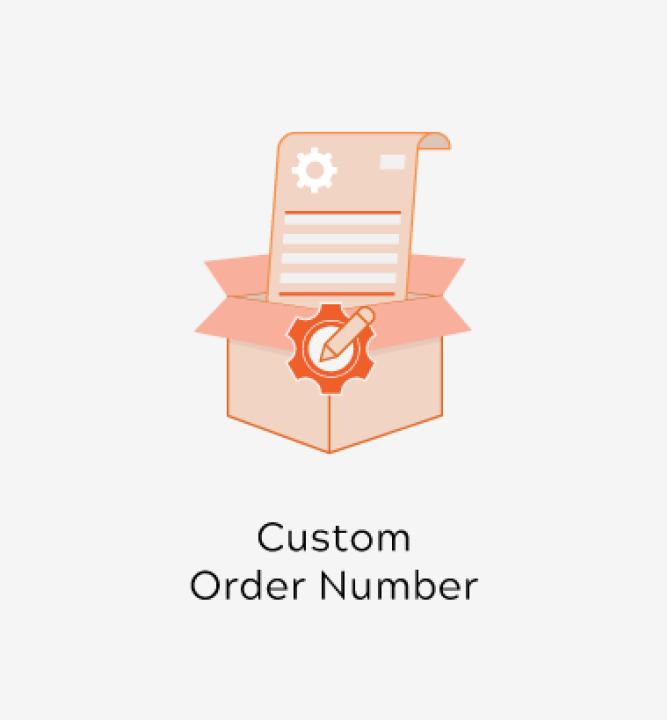Magento 2, one of the most robust eCommerce platforms,
provides a wide range of built-in features. However, for specific business
needs, customizing certain functionalities is often essential. One such
customization is the modification of order numbers. By default, Magento
generates order numbers in a sequential pattern starting from the number
000001. For various reasons, including branding, security, and operational
needs, businesses might want to configure custom order numbers. Here’s where
the Magento 2 Custom Order Number extension comes into play.
In this blog post, we will guide you through the steps of
configuring the Magento 2 Custom Order Number extension to customize your order
numbers as per your business needs.
Why Use Custom Order Numbers?
Before diving into the configuration steps, let’s understand
why customizing order numbers can be beneficial:
- Security:
Sequential order numbers can give away information about your business’s
sales volume. Customizing order numbers adds a layer of security by making
it difficult for competitors or malicious users to track your sales.
- Brand
Identity: Customized order numbers can be aligned with your brand
identity, enhancing professionalism and giving a personalized touch.
- Operational
Needs: Certain businesses may have unique requirements for order
number formats, such as incorporating specific prefixes or suffixes for
easier internal tracking.
Step-by-Step Guide to Configuring Magento 2 Custom Order
Number Extension
Step 1: Install the Custom Order Number Extension
To begin with, you need to install a reliable Custom Order
Number extension. There are several extensions available in the Magento
marketplace and on third-party websites. Choose the one that best suits your
requirements.
- Download
the extension from the Magento Marketplace or third-party provider.
- Install
the extension via the Magento admin or using Composer (if provided).
- After
installation, run the following commands in your Magento 2 root directory
to complete the installation process:
php bin/magento setup:upgrade
php bin/magento setup:di:compile
php bin/magento cache:flush
Step 2: Access the Extension Configuration Settings
Once the extension is successfully installed, you can configure
the custom order numbers by following these steps:
- Log
in to your Magento 2 Admin Panel.
- Navigate
to Stores > Configuration.
- In
the left sidebar, under the Sales section, you should see a new
option for Custom Order Numbers (this may vary depending on the
extension you’ve installed). Click on it to access the configuration
settings.
Step 3: Configure General Settings
The general settings allow you to define the basic structure
of your custom order numbers.
- Order
Number Prefix: This is the prefix that will appear before every order
number. You can use letters, numbers, or a combination of both. For
example, if your store’s name is "XYZ Store", you might use
"XYZ-" as the prefix.
- Order
Number Suffix: This is the suffix that will appear after every order
number. You can add the year, month, or any other relevant information
here.
- Order
Number Start: Set the starting number for your orders. This is useful
if you want to begin numbering from a specific point, such as 1000 instead
of 000001.
- Order
Number Length: If you want your order numbers to have a fixed length
(e.g., always be 8 digits long), you can set this here. The system will
pad the number with leading zeros if necessary.
Step 4: Advanced Settings
The advanced settings allow you to add more complexity to
your custom order numbers.
- Random
Number Generator: Some extensions allow you to use a random number
generator for order numbers. This adds an extra layer of security by
ensuring that order numbers are not sequential.
- Date
Variables: You can insert date variables into your order numbers. For
instance, you could include the year or month as part of the order number,
making it easier to track when the order was placed.
- Different
Settings for Other Documents: Many extensions let you customize the
numbering for other sales documents like invoices, shipments, and credit
memos. You can configure unique prefixes, suffixes, and number sequences
for each type of document.
Step 5: Save and Test Your Configuration
Once you’ve configured all the settings, click the Save
Config button at the top right corner of the page. It’s important to clear
your cache to ensure the new configuration is applied. You can do this by
running the following command:
php bin/magento cache:flush
Now, place a test order on your store to ensure that the
custom order numbers are working as expected. Check if the order number
reflects your configured prefix, suffix, and other settings.
Step 6: Monitor and Adjust (If Necessary)
After testing, monitor your orders to ensure the new
numbering system is working correctly. If you encounter any issues, you can
return to the configuration settings and make adjustments as needed.
Bonus Tips
- Backup
Your Store: Before installing any extensions or making significant
changes, always ensure you have a full backup of your store. This will
allow you to revert to a previous state if something goes wrong during the
installation or configuration process.
- Contact
Support: If you’re using a third-party extension and run into issues
that you can’t resolve, don’t hesitate to contact the extension provider’s
support team. They can offer guidance specific to their product.
Conclusion
Configuring a custom order number system in Magento 2 is a
straightforward process with the right extension. Whether your goal is to
enhance security, align with your brand, or improve operational efficiency, the
Magento 2 Custom Order Number extension provides the flexibility needed to meet
your unique business requirements.
By following the steps outlined in this guide, you’ll be
able to configure and implement a custom order number system that works for
your store. Don’t forget to test thoroughly and make adjustments as necessary
to ensure a smooth and professional experience for both you and your customers.
Happy selling!









